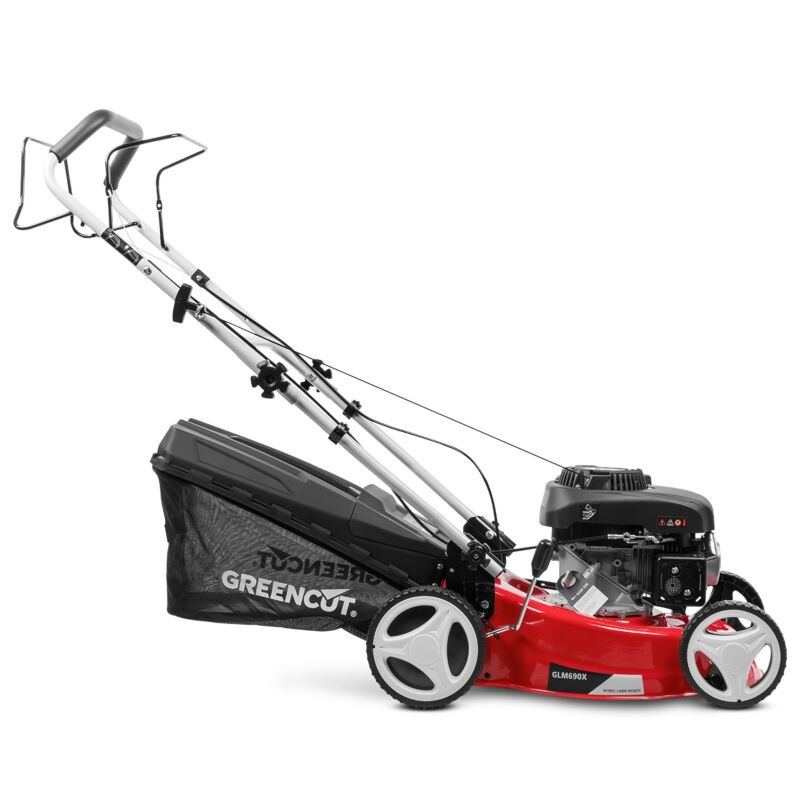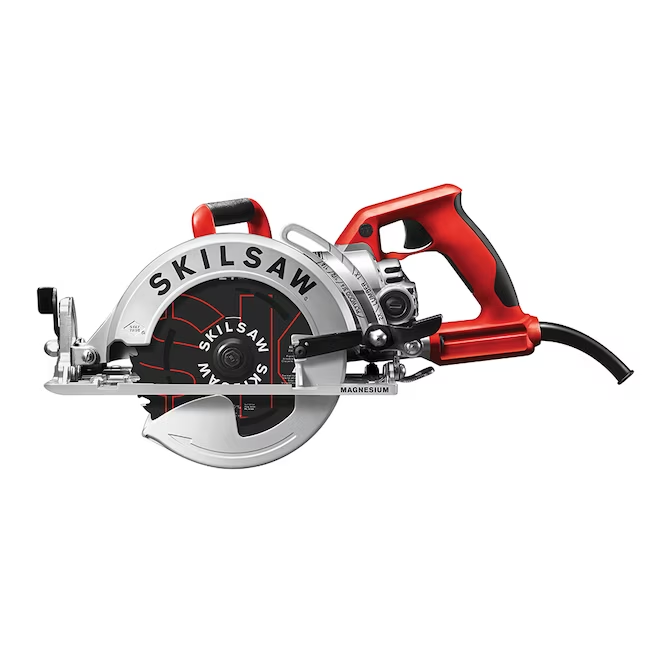
What Kind of Oil for Lawnmower: Choosing the Right
Importance of Selecting the Appropriate Oil
When maintaining your lawnmower, selecting the right oil is crucial. The appropriate oil ensures your engine runs smoothly and efficiently. It reduces wear and tear, protecting engine parts from damage. Oil acts as a lubricant, minimizing friction between moving parts. This reduces the risk of overheating and prolongs your lawnmower’s life.
The right oil can also impact fuel economy. A well-lubricated engine uses fuel more effectively, which can save you money. Furthermore, using the correct oil helps in preventing costly repairs. Incorrect oil may lead to engine failure, and that means unwanted expenses.
Choosing the right oil for your lawnmower isn’t just about engine care. It’s also about environmental responsibility. The right oil will burn cleaner, releasing fewer emissions. This means you’re not only caring for your lawnmower but also taking a step towards protecting the environment.
In summary, the right oil for your lawnmower makes it reliable, cost-effective, and eco-friendly. Keep this in mind when you search for ‘what kind of oil for lawnmower’. Your choice will have long-term effects on the performance and longevity of your lawnmower.
 Types of Oil Suitable for Lawnmowers
Types of Oil Suitable for Lawnmowers
Choosing the right type of oil for your lawnmower is essential for optimal performance. Generally, lawnmowers require a high-quality detergent oil classified as ‘Service SF, SG, SH, SJ’ or higher. Here are the common types of oil used in lawnmowers:
- SAE 30: Ideal for warmer temperatures, SAE 30 is the most common oil for small engines.
- SAE 10W-30: Varies in viscosity based on temperature. It’s good for a range of climates but may increase oil consumption.
- Synthetic SAE 5W-30: Best in cold conditions, provides excellent flow in low temperatures and reduced oil consumption.
- SAE 5W-30: Suitable for areas with cold winters as it improves cold-weather starting.
While ‘what kind of oil for lawnmower’ remains the key question, remember that the manual is your best guide. It outlines the exact type of oil recommended for your model. If the manual is not available, the above information can serve as a starting point for most lawnmowers. Nevertheless, be mindful that different engines and models might require specific oil types. Always opt for oil that corresponds with the season and temperature conditions of your environment to ensure the longevity of your lawnmower.
Factors Influencing Oil Choice
When seeking answers to ‘what kind of oil for lawnmower’, various factors should guide your choice. Here are some key factors to consider:
- Engine Type: Determine whether your lawnmower has a two-stroke or four-stroke engine. Two-stroke engines often require a mix of oil with fuel, whereas four-stroke engines have a separate oil compartment.
- Climate Conditions: The external temperature affects oil viscosity. For example, SAE 30 is better for warm weather, while SAE 5W-30 works well in cold climates.
- Lawnmower Age and Condition: Older engines may benefit from higher viscosity oil that can better coat worn surfaces. For newer engines, follow the manufacturer’s recommendations.
- Manufacturer’s Specifications: Always check your lawnmower’s manual for the manufacturer’s recommended oil type. This is the most reliable source for ensuring compatibility with your engine.
- Usage Frequency: If you use your lawnmower regularly, it might require oil with better wear protection compared to one used less frequently.
- Environmental Standards: Consider eco-friendly oils that offer lower emissions to protect the environment, aligning with your own values for sustainability.
Remember, choosing the correct oil is not just about what kind best suits your lawnmower, but how these factors interact to influence your decision. Taking the time to understand these aspects will help you select an oil that ensures your lawnmower’s engine runs at its peak performance while also considering long-term maintenance and cost-effectiveness.
Synthetic vs. Conventional Oil for Lawnmowers
When choosing ‘what kind of oil for lawnmower’, consider synthetic versus conventional options. Both have benefits.
Synthetic Oil Advantages
- Better Performance: Synthetic oils offer superior lubrication, enhancing your lawnmower’s performance.
- Temperature Resilience: They perform well in extreme temperatures, whether cold or hot.
- Longevity: They can last longer, reducing the frequency of oil changes.
Conventional Oil Advantages
- Cost-Effective: Conventional oils are usually less expensive up-front than synthetics.
- Availability: They are wide-ranging and easy to find in stores.
Nevertheless, the initial savings with conventional oil might lead to more expenses. They generally need changing more often than synthetic options. Synthetic oils, while pricier, could save money in the long-term. They provide better engine protection, which may reduce the risk of costly repairs. Remember that specific lawnmower models may perform better with a particular oil type. Pleaase, always refer to your lawnmower’s manual before making a decision. This guidance ensures you get the right oil that meets your engine’s needs, aligning with the manual’s recommendations. For an eco-friendly and high-performing lawnmower, considering synthetic oil could be a wise choice.
How to Check Your Lawnmower’s Oil Requirements
Knowing what kind of oil for your lawnmower is essential for its performance. Here’s how you can check the oil requirements for your lawnmower:
- Read the Manual: The first step is to check the owner’s manual. It lists the specific oil type and grade for your engine. Manuals usually offer the most accurate recommendations for oil requirements.
- Determine Engine Type: Identify if your lawnmower has a two-stroke or four-stroke engine. This affects the oil type; two-stroke engines typically use oil mixed with fuel, while four-strokes have separate oils.
- Inspect Oil Cap or Dipstick: Look for any indicators on the oil cap or dipstick. Some have the viscosity and type of oil printed on them, guiding you to the right choice.
- Check Under the Hood: If your mower has a hood, you may find a sticker or plate with oil advice. This information is straight from the manufacturer and reliable.
- Contact the Manufacturer: If you don’t have the manual or can’t find the information, contact the lawnmower’s manufacturer. They can provide you with the oil specifications for your model.
- Seek Professional Advice: Get help from a professional. They can advise you on the oil that’s best for your lawnmower, considering all operational factors.
- Observe Climate Influence: Remember that the climate plays a role. Cool climates might require oils like SAE 5W-30, while warmer ones might be better with SAE 30.
Taking the time to determine the right oil can make a significant difference. It keeps your lawnmower running smoothly and extends its lifespan. Always double-check to ensure you have the correct oil, considering climate, engine type, and manufacturer guidelines.
Step-by-Step Guide to Changing Lawnmower Oil
Changing the oil in your lawnmower is a straightforward process. Follow these steps to ensure you do it correctly:
- Warm Up Your Lawnmower – Start your lawnmower and let it run for a few minutes. Warm oil drains better than cold.
- Turn Off the Engine – Switch off your lawnmower and allow it to cool slightly, to avoid burns.
- Locate the Drain Plug – Find the oil drain plug, usually beneath the mower deck.
- Place a Container Underneath – Get a pan or container ready to catch the oil when you drain it.
- Remove the Drain Plug – Take out the plug and let the old oil flow into the container.
- Empty Old Oil – Ensure all the old oil is drained and then replace the drain plug securely.
- Refill with New Oil – Open the cap where you add oil and pour in the correct type. Use ‘what kind of oil for lawnmower’ as a guide to select the right one.
- Check Oil Level – Use a dipstick to check the oil level. Ensure it’s not overfilled.
- Dispose of Old Oil Properly – Take the old oil to an appropriate disposal facility. Don’t dump it carelessly as it harms the environment.
By following these steps, you ensure your lawnmower stays in top shape. Regular oil changes will keep your engine running smoothly, cut down on wear and use fuel efficiently. Plus, you’re taking responsibility for the environment by disposing of oil correctly. Remember the type of oil you use should match the factors previously discussed, like climate and engine type, reflecting your lawnmower’s needs.
Common Mistakes to Avoid When Choosing Lawnmower Oil
Choosing the right type of oil for your lawnmower is pivotal. Avoiding common mistakes can save you time, money, and prolong the life of your equipment. Here are some pitfalls to steer clear of when you’re answering the question: ‘what kind of oil for lawnmower?’
- Ignoring the Manual: Many users make the mistake of not consulting the lawnmower manual. The manual specifies the correct oil type for your specific model.
- Using Car Oil: Not all motor oils are alike. Car oil often doesn’t meet the specific requirements that a lawnmower engine needs.
- Disregarding Climate: Choosing an oil without considering the climate can harm your engine. For example, using a thick oil in cold weather might lead to starting issues.
- Overfilling: More is not always better. Adding too much oil can create pressure and cause seals to burst, leading to leaks and damage.
- Old Oil: Reusing oil may seem economical but can cause damage. Old oil contains debris that can wear down the engine.
- Wrong Viscosity: The thickness of your oil matters. Using the wrong viscosity can mean poor lubrication and increased wear.
By being mindful of these mistakes and adhering to recommendations, you’ll ensure your lawnmower’s engine is well-maintained and lasts longer. Remember, the right oil will enhance performance and promote engine longevity. Keep ‘what kind of oil for lawnmower’ in mind when making your selection, and you’ll avoid common errors that can lead to costly repairs.
Best Practices for Lawnmower Maintenance
Maintaining your lawnmower through best practices will keep it running efficiently for years. Here’s what you need to do to ensure optimal performance and durability:
- Regularly Check Oil Level: Like your car, your lawnmower needs enough oil to operate well. Check the level before each use.
- Change Oil Periodically: Depending on usage, change the oil after every 20-50 hours of operation. Refer to your manual for specific intervals.
- Clean Air Filters: A clean air filter allows your engine to breathe. Clean or replace them as recommended by your lawnmower’s manufacturer.
- Keep Blades Sharp: Dull blades tear grass, causing stress to your lawnmower and lawn. Sharpen blades at least once a year.
- Inspect Spark Plugs: A faulty spark plug can cause your engine to misfire. Replace spark plugs once a season, or as indicated in your manual.
- Check Belts and Cables: Worn belts and cables can lead to poor performance. Examine them regularly and replace if necessary.
- Clear Debris: After each mow, remove any grass or debris from the mower deck. This prevents clogging and corrosion.
- Store Properly: During off-seasons, store your lawnmower in a dry place. This prevents rust and keeps it ready for use.
- Use Fresh Fuel: Old fuel can degrade and harm your engine. Use fresh fuel and don’t let it sit in the tank for long periods.
By adopting these best practices, your lawnmower will remain reliable season after season. Keep ‘what kind of oil for lawnmower’ in mind when servicing your machine, always select the right type based on your mower and the current climate, and follow the outlined steps to tackle lawnmower maintenance like a pro. These measures not only extend the life of your lawnmower but also save you money on repairs and replacements down the line.














Leave a Reply